Aldwell-Schachter Chapter 23
Click on a musical example for playback
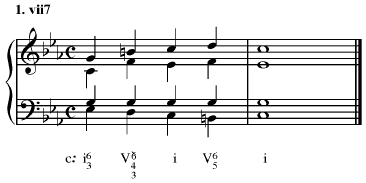
Note the position of the V6/5 in this progression. The introduction to vii7 involves understanding that vii7 can act as a substitute for a V6/5.
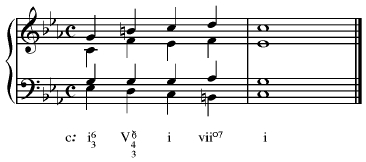
Voilà. This substitutes vii7 for V6/5. The only difference is the replacement of the 5th with a 6th—which replaces the common tone between V and I with a note which demands resolution.
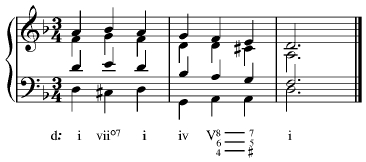
The simplest, and most basic use of vii7 is in its capacity as a lower neighbor to the tonic. With ^5 in the soprano, the figure ^5-^6-^5 is almost inevitable given the opportunity to replicate the lower neighbor in the bass with upper neighbors in the other three voices.
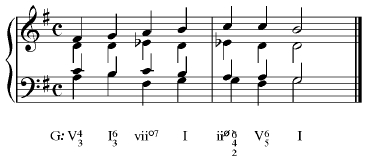
In major keys, vii7 is naturally a half-diminished seventh chord, a not altogether successful sonority, at least not in the role of a neighbor. Therefore, ^6 is lowered a half step in order to provide a fully diminished sonority. It is traditional to avoid indicating the lowered seventh degree, using just the diminished sign instead in the analysis.
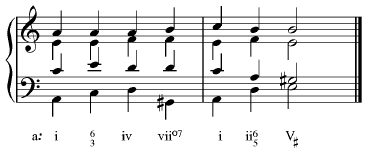
vii7 can be approached rather nicely from iv, since the common tone they share sets up the motion satisfactorily.
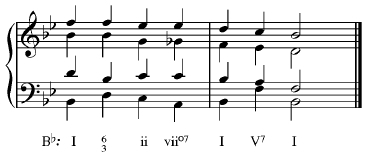
In major mode, motion from ii to vii7 works well, especially if you concentrate on maintaining the two common tones ^2 and ^4.
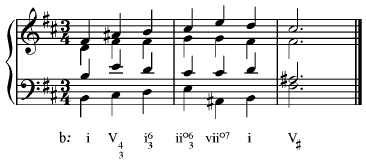
Obviously if you can move to vii7 from ii, then ii6 should work. Try to maintain at least one of the common tones; it’s best to maintain both if possible.
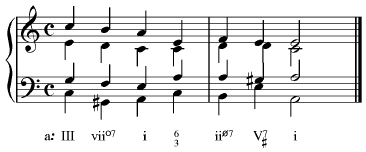
Motion from III in minor permits an alternate setting of ^3-^2-^1 in the soprano. Note that this will also work quite well in major.
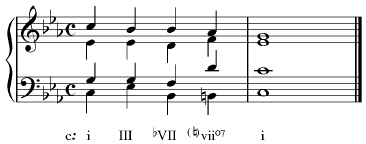
Motion involving III to the natural form of VII, and thence to vii7. This setting is taking full advantage of the natural-^7-raised-^7-^1 motion in the bass, which serves to mask the undeniable cross-relation that exists in the outer voices on the third and fourth beats. Having the motion chromatically in the bass renders this progression acceptable.
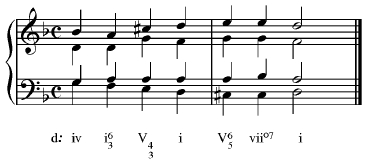
Here is a very simple and effective demonstration of the essential similarity between V6/5 and vii7.
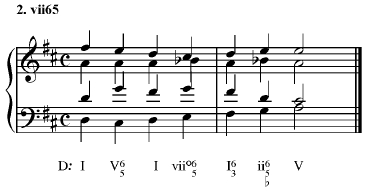
vii6/5 usually resolves upwards to I6/3—the tritone formed between the bass and the (diminished) fifth of the chord tends to require an inward resolution to a third.
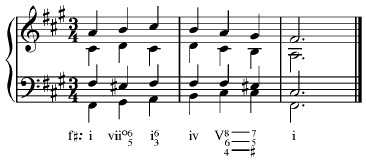
Another example of the same idea, this time in minor. vii6/5 is acting more or less as a substitute for vii6. Thus note that vii6 can be swapped with V6/4 or vii6/5.
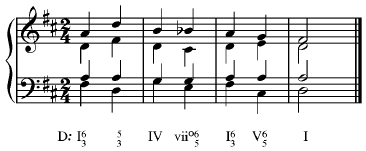
Motion from IV allows me to capitalize on the flat ^6 that is inherent in vii6/5 (along with all vii7’s and inversions). By keeping the motion ^6-flat^6 in the same voice I avoid cross relations.
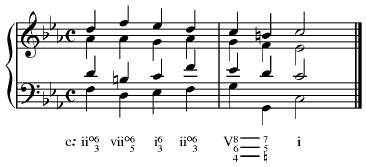
In minor, motion from ii6/3 allows the exploration of multiple diminished chords.
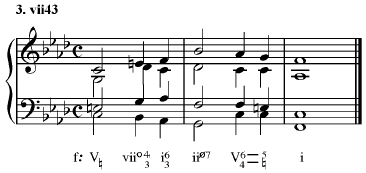
The resolution of vii4/3 should take care with the diminished fifth—that it resolves to a third.
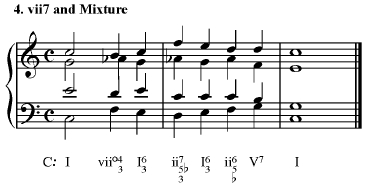
Frequently the flat ^6 characteristic of vii7 invites modal mixture in the following chords.
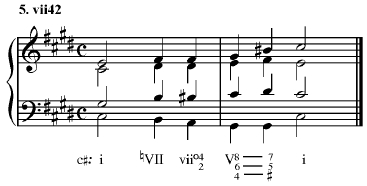
vii4/2 does an excellent job of preparing the dominant. Here it prepares a cadential 6/4 quite adroitly.